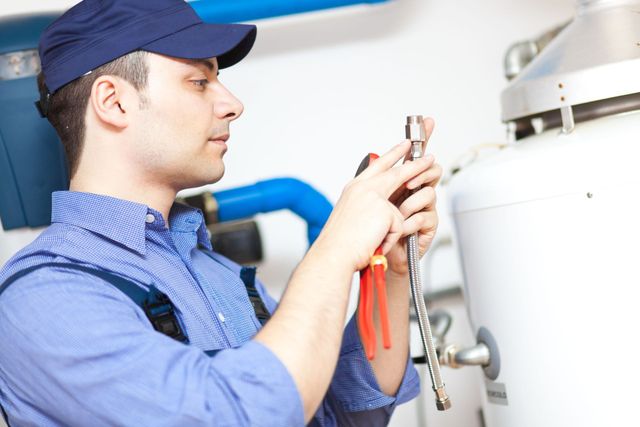Useful Techniques for Caring for Your Home's Hot Water SystemEfficient Strategies for Maintaining Your Home's Hot Water System
Useful Techniques for Caring for Your Home's Hot Water SystemEfficient Strategies for Maintaining Your Home's Hot Water System
Blog Article
We have unearthed this post on Tips on Maintaining a Water Heater down the page on the internet and felt it made good sense to relate it with you on this page.

Hot water is important for daily comfort, whether it's for a refreshing shower or cleaning dishes. To ensure your warm water system runs efficiently and lasts longer, routine maintenance is essential. This short article supplies useful ideas and understandings on just how to keep your home's warm water system to avoid disruptions and expensive fixings.
Introduction
Preserving your home's hot water system may appear daunting, yet with a few easy steps, you can guarantee it runs efficiently for years to come. This overview covers everything from comprehending your warm water system to DIY upkeep ideas and recognizing when to call specialist aid.
Importance of Preserving Your Warm Water System
Regular upkeep not just extends the life-span of your warm water system but likewise guarantees it runs effectively. Ignoring upkeep can bring about decreased performance, higher power costs, and even early failure of the system.
Indications Your Warm Water System Requirements Maintenance
Recognizing when your warm water system requires focus can prevent significant issues. Watch out for signs such as inconsistent water temperature, strange noises from the heating unit, or rusty water.
Recognizing Your Warm Water System
Prior to diving right into maintenance tasks, it's helpful to understand the standard components of your hot water system. Typically, this includes the water heater itself, pipelines, anode poles, and temperature level controls.
Month-to-month Upkeep Tasks
Normal month-to-month checks can aid capture small issues before they escalate.
Flushing the Water Heater
Purging your hot water heater gets rid of debris buildup, boosting performance and extending its life.
Checking and Changing Anode Rods
Anode rods avoid rust inside the storage tank. Examining and replacing them when broken is important.
Evaluating and Changing Temperature Level Setups
Readjusting the temperature level setups makes sure optimum efficiency and security.
Do It Yourself Tips for Upkeep
You can execute a number of upkeep tasks yourself to keep your hot water system in leading condition.
Looking for Leakages
Frequently inspect pipes and links for leaks, as these can bring about water damages and greater expenses.
Testing Stress Relief Valves
Evaluating the stress relief valve ensures it works properly and protects against extreme pressure accumulation.
Protecting Pipelines
Insulating hot water pipelines minimizes heat loss and can conserve power.
When to Call a Professional
While do it yourself maintenance is valuable, some problems require professional know-how.
Facility Problems Requiring Expert Aid
Instances consist of major leaks, electric issues, or if your hot water heater is constantly underperforming.
Regular Expert Maintenance Benefits
Professional maintenance can include detailed examinations, tune-ups, and guaranteeing compliance with safety and security requirements.
Final thought
Regular upkeep of your home's warm water system is crucial for efficiency, durability, and cost savings. By complying with these tips and recognizing when to look for expert help, you can guarantee a dependable supply of warm water without unexpected disturbances.
How to Maintain an Instant Hot Water Heater
Before tinkering with your hot water heater, make sure that it’s not powered on. You also have to turn off the main circuit breaker and shut off the main gas line to prevent accidents. Also turn off the water valves connected to your unit to prevent water from flowing into and out of the appliance. 2. When you’re done, you have to detach the purge valves’ caps. These look like the letter “T” and are situated on either side of the water valves. Doing so will release any pressure that has accumulated inside the valves while at the same time avoid hot water from shooting out and burning your skin. 3. When the purge valves’ caps are removed, you have to connect your hosing lines to the valves. Your unit should have come with three hoses but if it didn’t, you can purchase these things from any hardware or home repair shops. You can also get them from retail stores that sell water heating systems. Read the user’s manual and follow it to complete this task properly. When the hosing lines are connected, open the purge port’s valves. 4. You should never use harsh chemical cleaners or solutions when cleaning your unit. Make use of white vinegar instead. It should be undiluted and you’ll probably use about 2 gallons. 5. Now flush your water heater. This task should probably take about 40 minutes. We can’t give you specific directions for this because the procedure is carried out depending on the type, model and brand of your heater. With that being said, refer to the user’s manual. 6. When you’re done draining the unit, you have to turn off the purge port valves again. Remove the hosing lines that you earlier installed on each of the water valves. Put the valve caps (purge port) back in their respective places and be very careful so as not to damage the rubber discs that are found inside these caps. 7. Now that everything’s back in place, check your user’s manual again to find out how to reactivate your water heating system. 8. Once it is working, turn one of your hot water faucets on just to let air pass through the heater’s water supply pipes. Leave the tap on until water flows smoothly out of it. https://www.orrplumbing.com/blog/2014/september/how-to-maintain-an-instant-hot-water-heater/

I discovered that write up about How to Maintain a Hot Water Heater in a Few Simple Steps when looking around the internet. I beg you take the opportunity to share this page if you liked it. Thank you for your time. Revisit us soon.
Book Your Service Report this page